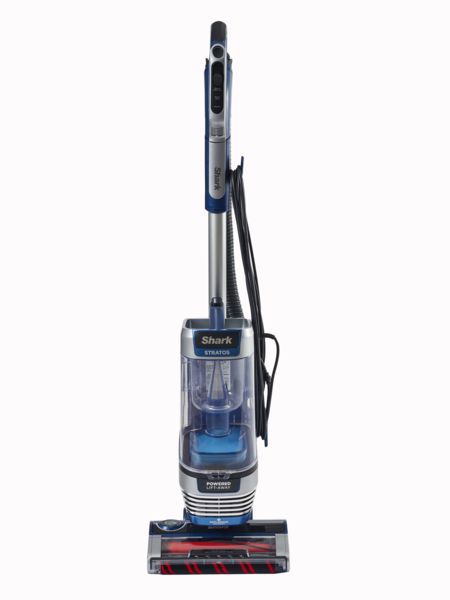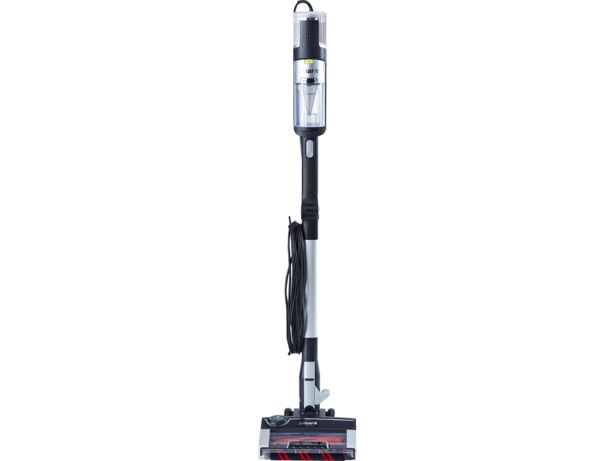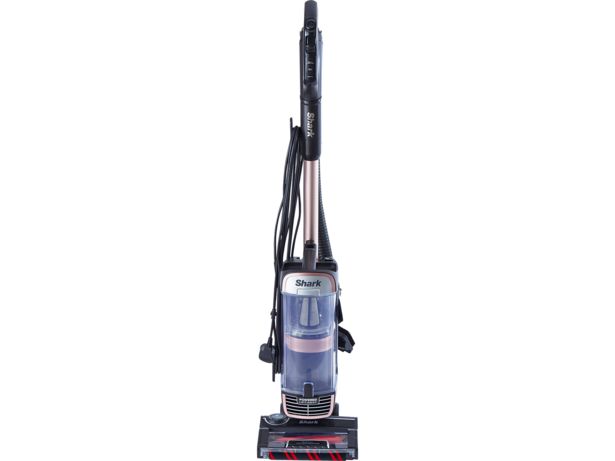How to fix a vacuum cleaner that's lost suction

If your vacuum cleaner has lost suction, isn't picking up dirt, or has stopped working completely, there are a few simple quick fixes you can try that might bring it back to life.
When vacuum cleaners lose suction, it's usually down to a handful of common problems, including a tangled brush bar, clogged filters, an overflowing dust container or blocked airways. Fixing these can instantly and dramatically improve your vacuum's cleaning power, and save you having to call in and pay for an expert to help or potentially save the cost of a new vacuum cleaner.
Read on for step-by-step maintenance guidance to get your vacuum feeling, and cleaning, like it's new again.
Inspiring tips for improving the place you live in Get our Home newsletter – it's free monthly
Watch: how to fix a vacuum cleaner
Take a look at our video below to see our step-by-step instructions to help you fix your vacuum cleaner if it's stopped working.
1. Clean the vacuum cleaner floor head and brush bar
Turn your vacuum cleaner floor head over and examine it:
- No brush bar – if your floor tool doesn't have a spinning brush bar, check the air pathways, and any bristles round the edge of the tool. Hair, fluff and dust can sometimes get trapped on here, blocking the airway. Remove any debris so the airway is clear.
- Brush bar – if your floor head has a brush bar and it's covered in hair and fibres, this will affect how well it sucks up dust, dirt and pet hair. If you have longer-haired residents, this can happen quite quickly, so it's worth keeping a regular eye on this to prevent damage to the bristles from clogging.
Depending on the model, you'll either need to carefully cut along the brush bar and pull the hair out with your hands, or, if your vacuum has a removable brush bar, pull it out and then cut away hair and fluff and pull it off before reinserting.
It's worth checking for removable brush bars when you buy a new vacuum, as this feature makes it much easier to clean. You can wear disposable gloves if you don't want to have contact with the dirt.
We use real cat and dog hair in our lab tests. Find out more about how we test cordless vacuum cleaners.

2. Clean your vacuum cleaner's filters
One of the most common reasons for a loss of suction, or the motor cutting out intermittently, is clogged filters.
There are two filters on nearly every vacuum cleaner:
- Motor filter – usually found at the back near where the exhaust from the vacuum is emitted.
- Allergen filter – typically nearer to the dust container, or bag.
You should clean these two filters regularly, usually at least once a month. Check your manual for advice on where the filters are and how to clean them, as it can differ by model. Common types include:
- Self-cleaning filter – usually you'll need to simply twist a dial to shake dirt free from these filters.
- Washable filter – remove and run the filters under a tap, or machine wash if that's permitted by the manufacturer. Leave to dry naturally, ideally for 24 hours or until completely dry, before you put it back in the vacuum cleaner.
- Replaceable filter – some filters will need to be replaced periodically to maintain your machine's performance.

3. Regularly replace the bag or empty the dust container
If your vac is chock full of dust, it will have an effect on cleaning power. We test vacuum cleaners when they are empty, and again when they have some dust and debris in them, to see if they'll keep cleaning once you've used them a few times. In nearly all cases suction drops when the bag or container is full of dust, sometimes by as much as 30%.
Bagless vacuums
Ideally, empty yours after every use – particularly if the dust capacity is less than a litre (common on cordless vacuums). Check where the max fill line is on the canister. You might be surprised to find it only around a third of the way up. When your vac's dust container looks visibly full, it almost certainly is well overdue being emptied.
Bagged vacuums
Replacement bag costs can add up, so you'll want to get the most out of each dust bag on a bagged model. But if you're finding suction levels dwindling, check the bag. If it's full up, switching it over to a fresh one can help restore suction quickly.
To avoid constantly having to empty your vac, use our vacuum cleaner reviews to choose a model that doesn't lose too much suction as it begins to fill up with dust.
4. Check the hose and cleaning tube for blockages
If none of the above has improved the performance of your vacuum cleaner, it's worth having a thorough check of the vacuum cleaner hose and/or cleaning wand for any possibly obstructions. Stray socks, clumps of hair and fluff or debris such as bottle caps may have been inadvertently sucked up and got lodged somewhere.
Use a torch to look inside the tube, and separate it from the floor head and vacuum body if possible to see if you can spot any obstructions.
Other common vacuum cleaner problems and how to fix them

How to fix a broken vacuum cleaner belt
If you have an upright vacuum cleaner and the spinning brush bar has stopped working, even after clearing any trapped hair and debris, it's possible the vacuum belt (which drives the brush bar on some models) has broken. The good news is that replacing the belt is relatively easy:
- Order a replacement belt from an approved supplier.
- Unscrew the bottom panel on the floor head to remove the brush bar.
- Slip off the old vacuum cleaner belt from the brush bar and the drive pulley, which will be near the rear wheels of the vacuum.
- Fit the new belt in its place and screw the panel back on to keep the brush bar in place.
A replacement vacuum cleaner belt only costs a couple of pounds, and fitting it couldn't be much simpler. So it's worth checking your belt isn't broken before canning your vacuum.

Looking after your cordless vacuum batteries
Everyday maintenance is even more important if you have a cordless vacuum cleaner. These generally have small capacities and can quickly clog up if you don't keep on top of emptying the canister and cleaning the brush bar/filters. You'll also need to take care of the battery if you want your vacuum to last.
Most cordless vacuums use lithium-ion batteries, which have very different characteristics to old-style batteries. Many manufacturers only guarantee the battery on cordless products for a year, so it's important to look after yours to keep your cordless vacuum performing as it should.
Here are some top tips for looking after your cordless vacuum battery.
- Store in a cool place. Warm temperatures can be harmful, so avoid prolonged sunlight, particularly when it’s on charge.
- You can leave it on charge. Unlike older nickel batteries, you don't have to unplug your lithium-ion powered vacuum cleaner when it reaches 100%. A lithium-ion battery knows when it's at full charge and stops drawing power.
- Try not to drain your battery completely. Unlike old style batteries which benefited from deep drains and recharging, lithium-ion batteries are actually more likely to be damaged if they are regularly fully drained. Samsung, for example, suggests trying not to let your battery fall below 20% of charge. Little and often is the most effective way to keep your lithium-ion battery healthy, rather than regular deep drains. These can cause small cracks to form in the battery, and reduce its effectiveness.
Some models have swappable batteries, and others, such as Dyson, can be replaced if they wear out. Either option is usually quite pricey though. See our cordless vacuum reviews to compare models and find the best.
What to do if your vacuum still doesn't work

The best way to prevent any faults occurring on your vacuum cleaner, and to keep it cleaning as well as when you first took it out of the box, is through regular maintenance.
Keeping on top of these three jobs will make a big difference to the longevity and efficiency of your vacuum cleaner:
- Clean filters regularly.
- Don't overfill the bag or dust container.
- Keep the brush bar free of hair and fibre.
If none of the above steps have fixed the problem, your next port of call should be the manufacturer. Many manufacturers, including Miele and Dyson, have their own service centres that will diagnose and fix the issue with your machine. Some have video maintenance guides on their websites too.
If your vacuum cleaner is outside of its warranty, Which? Trusted Traders will be your next best bet. You will be able to find a Which? recommended vacuum repairer in your area who will help diagnose and fix the fault with your machine.
If your product has broken earlier than it should, see our guide to returning faulty goods for advice on how to get your money back.
Buying a new vacuum cleaner
If it really is the end for your trusty vacuum cleaner and you need to buy a new one, make sure you pick from one of our best vacuum cleaners or best cordless vacuums.
We test more than a hundred popular vacuum cleaners from brands such as Bosch, Dyson, Hoover, Miele and Vax every year so we can recommend the very best for your needs.


